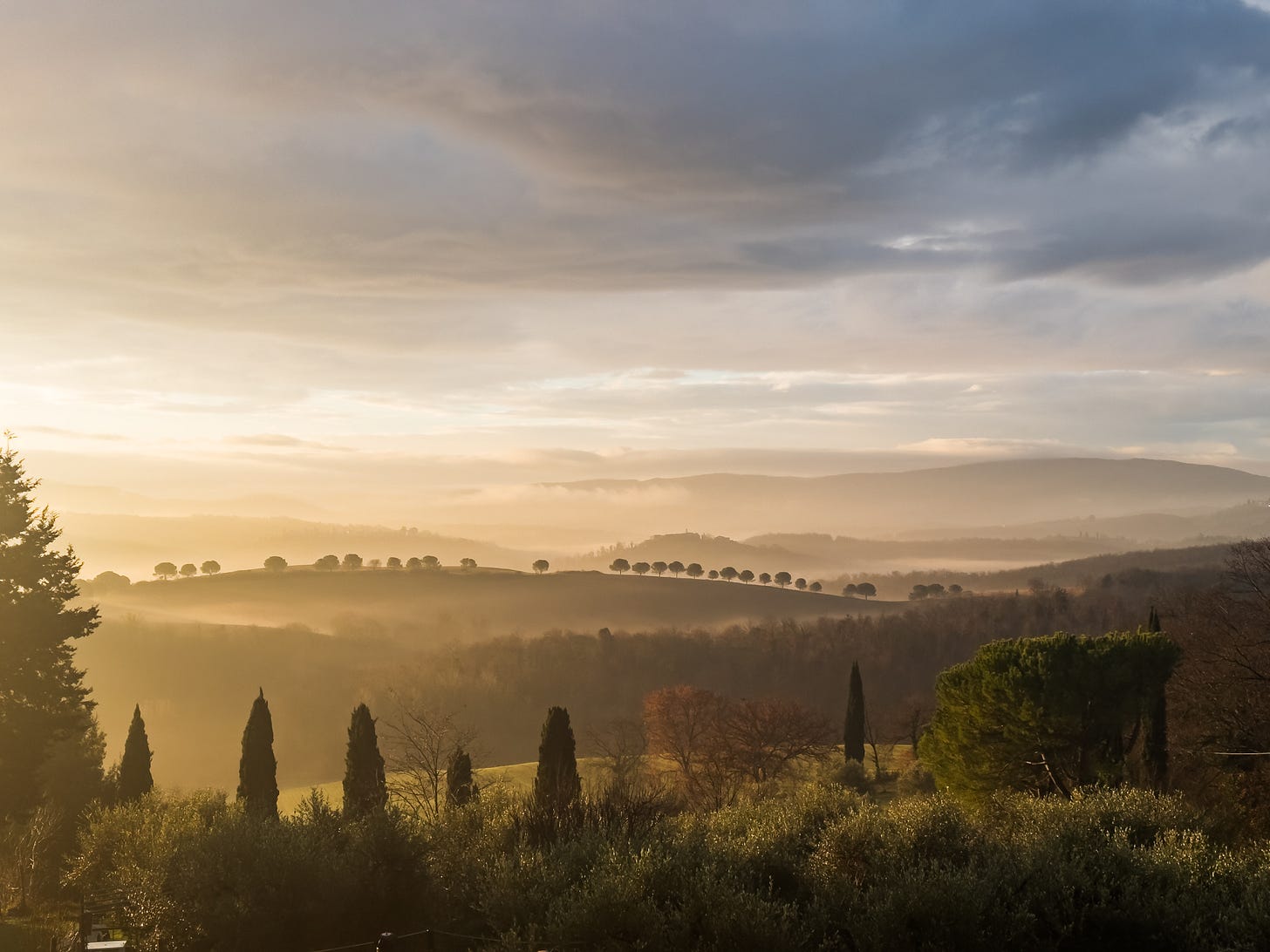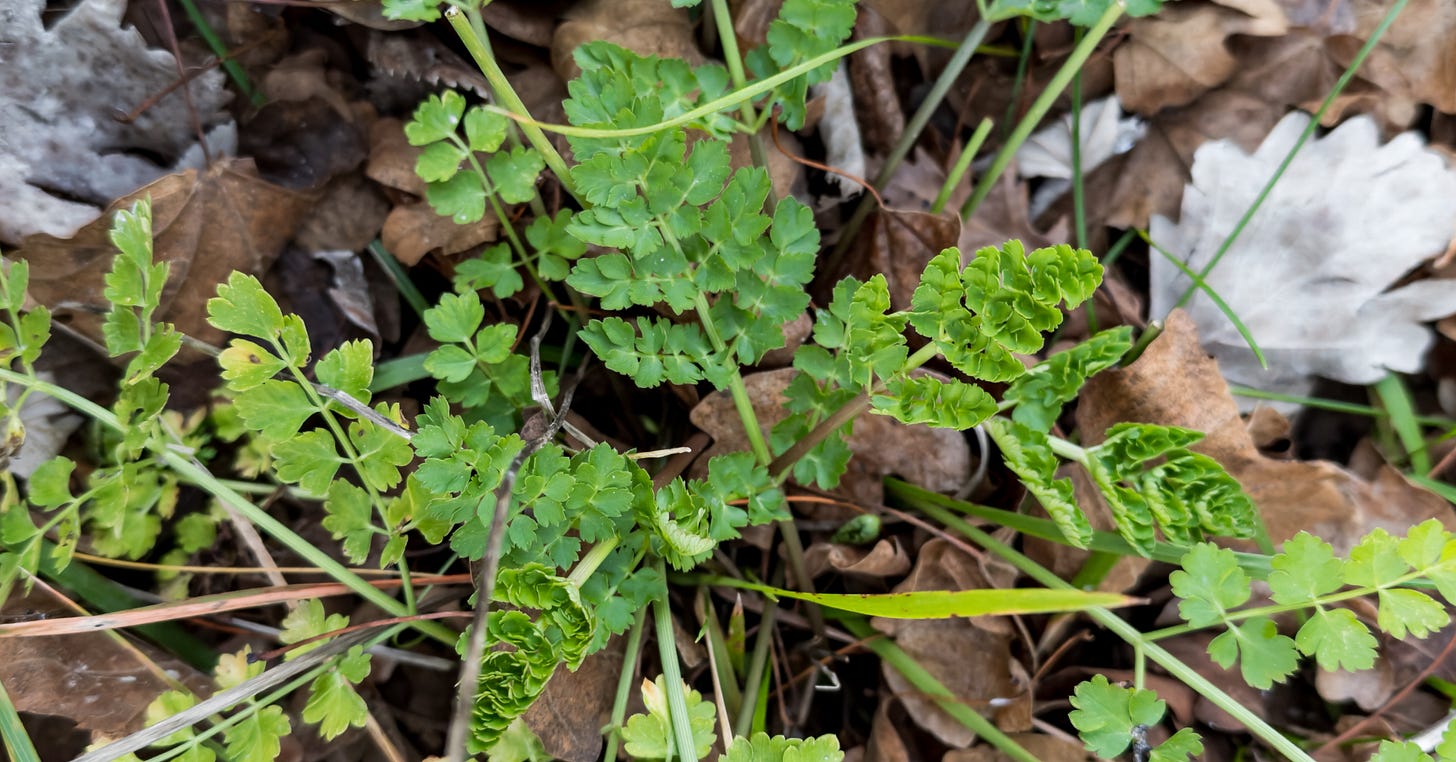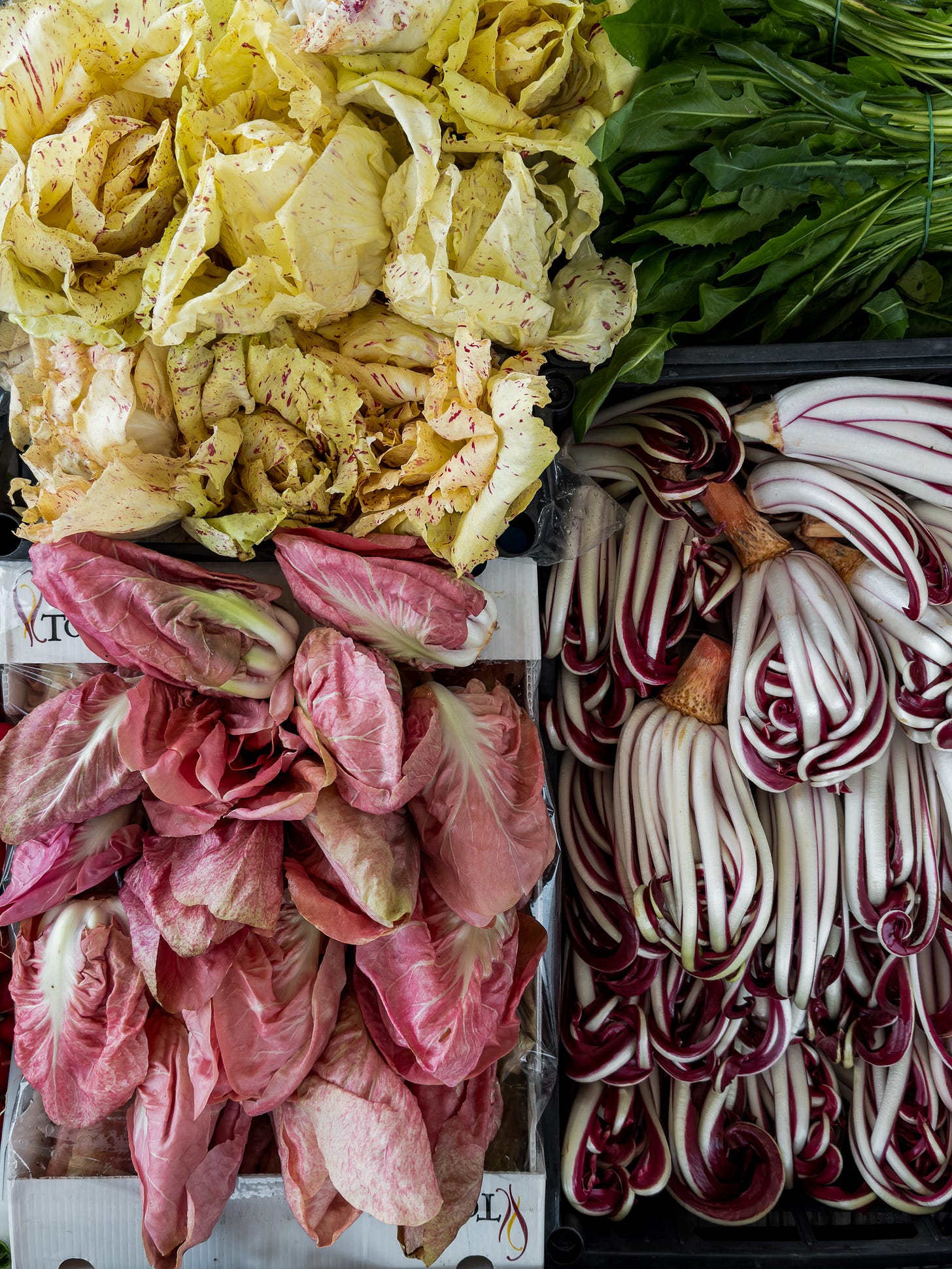A year in a Tuscan cooking school: January
A glimpse into the quiet months of our Tuscan cooking school: market hauls, country walks, and seasonal recipes
Welcome to the first installment of a new column, A year in a Tuscan cooking school. Every month, I’ll take you behind the scenes of my cooking school, offering a glimpse of the beauty and rhythms of life here in Tuscany. I’ll share the treasures I find at the local market, the unforgettable stories of the people I meet during classes, and recipes inspired by the freshest seasonal ingredients.
This column will be more than a monthly update—it will have the breath, time, and space of a cookbook. Each story and recipe will unfold at its own pace, allowing me to dig deeper into the essence of Tuscan cuisine, culture, and the rhythms of the seasons.
Starting in February—exactly four years after we launched our subscription option on Substack—we’ll be making some changes to this newsletter. While most of our recipes and cook-alongs are already part of the paid subscription, we’ll soon be moving nearly all of our newsletters behind the paywall, including this column. The blog archive remains—and will always remain—free for everyone to browse.
JANUARY
After the fiery colors of autumn and the twinkling lights of Christmas, the countryside in January resembles a sepia-toned photo of oak woods and muddy roads. On a rare cold, sunny day, the reds and browns glow, cheering up that corner of Tuscany I can see from my kitchen window. But on most days, an overcast, dull sky frames a quiescent countryside, silent and still.
Yet, imperceptible signs of movement—excavated tubers underneath the hedgerows, the ferny leaves of salad burnet peeking out from a carpet of dry oak leaves, spindly narcissi growing next to the gate—betray the life stirring beneath the wintry cloak the countryside wears.
The same happens in our cooking school.
Gone are the weeks packed with cooking classes, market visits, aprons hanging on the clothesline in the garden, stained tablecloths, bottles of wine, more bottles of olive oil, wicker bags overflowing with seasonal produce, hands working around cutting boards, and long tables surrounded by happy people busy chatting, eating, and becoming friends. After the autumn flurry of classes and well before the gradual upswing of spring, we’re in the slowest month.
The studio feels silent and empty, cold on most days, as I prefer working in my home kitchen, warmed by the oven where I bake root vegetables or trays of apples with cinnamon and plump raisins. I venture downstairs only when we need to shoot photos for the next cookbook or invite friends over during the weekend. The long table in the studio comes in handy for hosting a little crowd, and the barbecue just outside the studio’s French window makes it easy to gather around a bowl of chips, a tray of vegetable sticks, and a dip, while also keeping an eye on a rack of pork ribs slowly roasting outside.
I’m slowly emptying the freezer, working through bags of frozen pici and tortelli accumulated over the months—odd leftovers from the generous mass production of fresh pasta that typically happens during classes. Alongside these, I’ve uncovered remnants of Tuscan kale pesto, a couple of frozen sausages, and the final dregs of last year’s chestnut flour. They’ve all been turned into quick meals during writing days.I’m tackling the pantry as well, trying to see the bottom of jars of nuts, flour, and spices before restocking for the new season of classes.
There aren’t any students in January, yet, there’s life out there: a steady stream of emails with inquiries and bookings, sometimes made many months in advance. They give us hope for a good season ahead.
I had to learn from the very beginning to trust the coming and going of classes, requests, and people.
Working seasonally puts your organizational skills and confidence to the test. There are weeks—months, actually—when you can barely breathe, when it seems that everyone wants to book one of your classes, and emails arrive even from local agriturismi and hotels trying to accommodate last-minute requests. Then there are months when everything peters out.
After my first year of teaching cooking classes, I panicked at the arrival of winter. I didn’t know if classes would resume in the spring; I second-guessed myself and my business choices. What if the first successful season of classes was just a series of fortunate events? What if I didn’t receive any more requests?
But over time, I learnt to embrace the ebb and flow. Most importantly, I worked with Tommaso to make it sustainable, by creating side gigs that don’t depend on seasonality (like this newsletter, our cookbooks, and the content creation work we do for a select few clients).
Now I welcome the low season of classes. I welcome the cold, misty mornings of January, when we finally have time to rest and retreat, and prepare for the new season ahead: we repaint the studio after a year’s worth of tomato splatters and coffee stains, and we try to find a new spot for the little shop we’re building—with our cookbooks, our favorite honey, and the cutest gnocchi board engraved by my dad with our logo.
These are the days devoted to reflecting on what we can improve. I browse through the cooking class menu book, where I’ve been noting down every menu from the past three years, to spot patterns, identify recipes that work well together, and figure out what’s missing or which recipes need to be developed for the next season. Then, in February, it will be time to take action, creating new dishes, improving old classics, and adding recipes to our cooking repertoire.
I have to admit that, as much as I love cooking with all my students during the cooking class season, I cherish these calm months. I rest—and I never take it for granted, as teaching classes is a creative, joyful job, but it takes its toll on you—I eat healthily-ish, I make soups and salads.
I walk.
I’d love to call it a daily habit, as it was during my pregnancy, but it’s not. When I see a stretch of sunshine, though, I put on my sneakers and head off along the same familiar path, whose puddles and hedgerows I now know by heart. During my walk, I have a wordless conversation with the nature around me, spy the signs of deer and wild boars that roamed the fields at night, and sort my ideas while airing my thoughts.
Walking along the silent, muddy road that takes us from our house to my friend Marta’s, I’m teaching Livia how to recognize the few wild greens I know. We started picking the first salad burnet leaves, their aroma a blend of cucumber and walnut—the first herb my grandma taught me to forage for making a salad. Now it’s Livia’s turn to pick leaves of pimpinella (the common name it goes by here in Tuscany) for our salad.
Foraging, washing, and mixing her own salad, choosing the leaves she wants to include—radicchio, pimpinella, mint, and Savoy cabbage—and leaving out those she doesn’t, like celery leaves, she finally had her first taste of a salad. Now she proudly massages it and serves it parsimoniously to her table mates.
In January, I go to the weekly market, alone.
Wednesday is market day, come rain or shine. I've been a regular at this little weekly market for about eight years. The market is held in a parking lot in the neighborhood of Gracciano, on the outskirts of Colle Val d’Elsa, where my elementary school was, where you’ll find the best gelateria in town, the post office, a pharmacy, a cozy café that makes outstanding espresso and cappuccino, and our favorite butcher shop. As I make my way to the vegetable stall, my first destination, I wave hello to old ladies who’ve known me since I was a kid, to friends who were with me when I was still riding my bicycle with training wheels, and to the market people who now know my shopping habits and preferences when it comes to radicchio, apples, and tomatoes.
Even though this weekly market is usually crowded with locals busy buying their weekly provisions of fruit and vegetables, along with a rotisserie chicken and a bundle of freshly cleaned anchovies, in January it feels even less touristy than usual.
Non c’hai nessuno oggi? The fruit and vegetable vendors, the cheesemonger, the butcher, they all greet me with the same question: How come you’re alone today? They are used to seeing me with a group of curious people in tow, gesticulating as I explain how to choose a fresh artichoke or what to do with those beautiful radicchio leaves that look like roses.
Alone, I spend time browsing through the seasonal vegetables, inquiring about the state of the artichokes—when will the local ones arrive? Are they fresh? Which are best for a pinzimonio?—the price of radicchio, and the skin of the oranges—I’ll need oranges with thick skins to make canditi, candied peels, soon.
My shopping bag(s) fill up quickly, as I’m as excited as ever to cook according to the season: a big bunch of cavolo nero to serve alongside pork chops, escarole to blanch and recook with anchovies, olives, and capers—three bunches. I know they look like a lot, but they shrink while cooking. Plenty of radicchio, the first artichokes, and… what’s that? Cime di rapa, turnip greens—also called rapini or broccoli rabe—, the original variety from Puglia, with fewer leaves and lots of sprouts, and a distinct mustard smell. Yes, Valentina tells me, you’re lucky today. Usually, in Puglia, they keep the good ones for themselves, so here you’ll only find it maybe twice a year. Today is your day.
After the market, I take a short walk to the butcher.
When it comes to meat, I try to behave just as I do with vegetables: I listen to my body's needs and cravings and cook according to the weather, respecting seasonality and tradition. In the past, meat was not a daily staple but something eaten sparingly for many reasons: diets were primarily plant-based, there were numerous fasting days throughout the year, and meat was expensive, or simply out of reach for many people—something reserved for special occasions and festivities.
January usually coincided with the time of pig slaughter. The cold months ensured that fresh meat could be preserved naturally in the biting winter air. The pig, often raised by a single family or collectively by a village, would finally fulfill its purpose, providing an essential food supply for the year ahead. The culinary traditions tied to the pig slaughter are rich and meaningful, often connected to the festivities of Saint Anthony the Great, celebrated on January 17th, the patron saint of butchers and domestic animals.
So, I am naturally drawn to pork when I visit the butcher in January. He offers local, free-range Grigio della Montagnola, a breed of pigs that roam freely in the nearby hilly forests, eating mushrooms, truffles, and acorns. The meat is flavorful and well-marbled, my first choice during classes and for our own consumption.
If you’d like to book a cooking class with us, you can find all the information on the blog, including a calendar of available experiences - we’re already 45% booked for the year!






